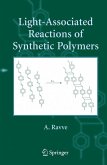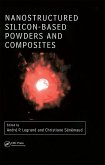In the present work, a new approach to obtain homogeneous, thermally stable and formable photoluminescent materials for LED applications is presented, starting from silicon-based polymers and through heat-treatment at low temperatures (200-700 °C). These commercially available or laboratory synthesized polymers are usually employed in the PDC route and annealed at temperatures beyond 1000 °C. Here, polysiloxanes, polysilazanes, polysilylcarbodiimides and a copolymer polysilazane-polysilylcarbodiimide were heat-treated up to 700 °C for 2 h under Ar atmosphere. The annealing is effective in order to develop materials with tunable photoluminescence properties. The maximum emission spectra of many of the polymers investigated show a bathochromic shift as the annealing temperature increases, indicating the development of new luminescent centers with smaller band gap. Our studies have shown that the luminescence properties are related to structural rearrangements occurring during the polymer to ceramic transformation, namely crosslinking and formation of sp2 carbon.
Bitte wählen Sie Ihr Anliegen aus.
Rechnungen
Retourenschein anfordern
Bestellstatus
Storno








